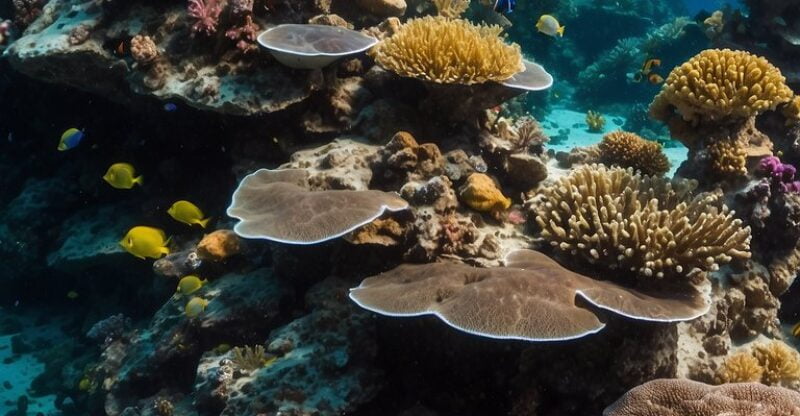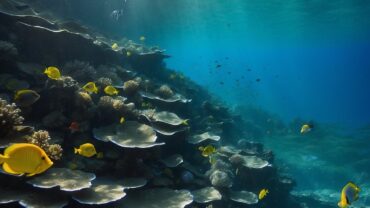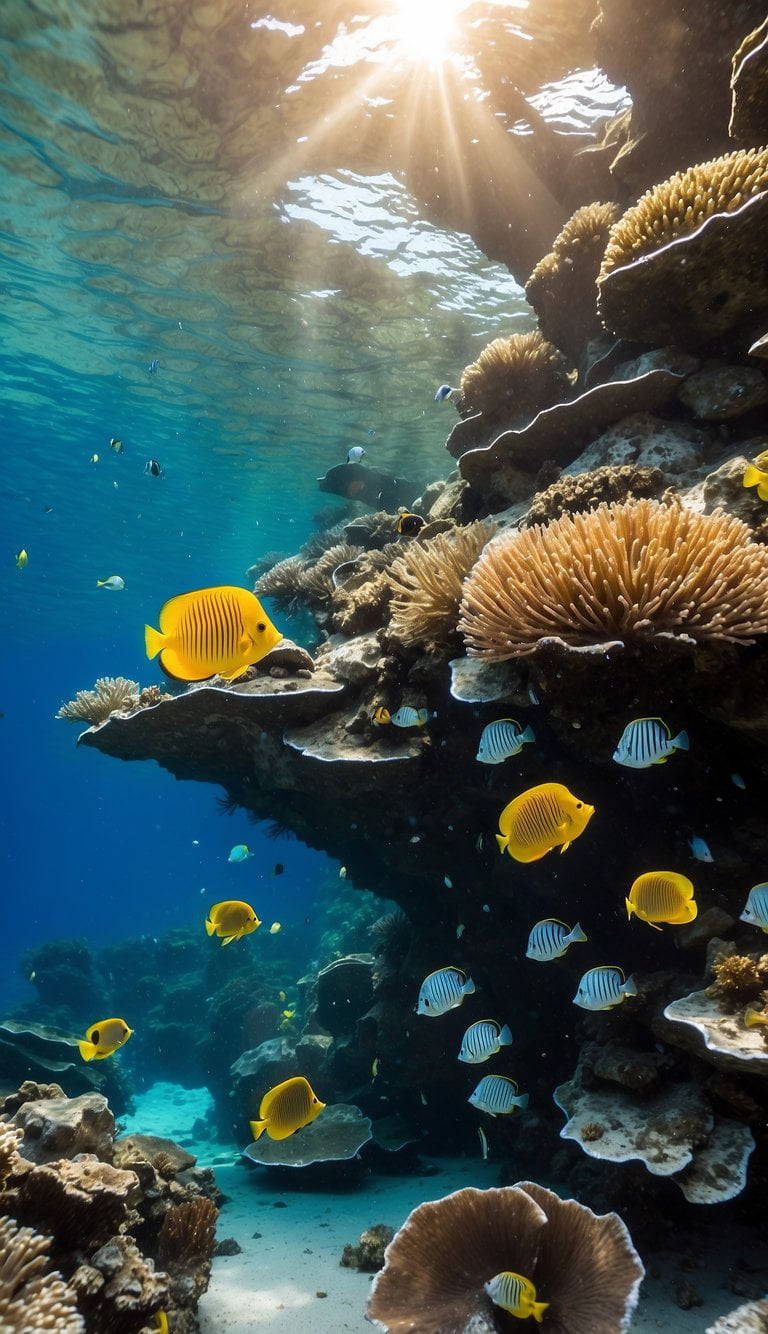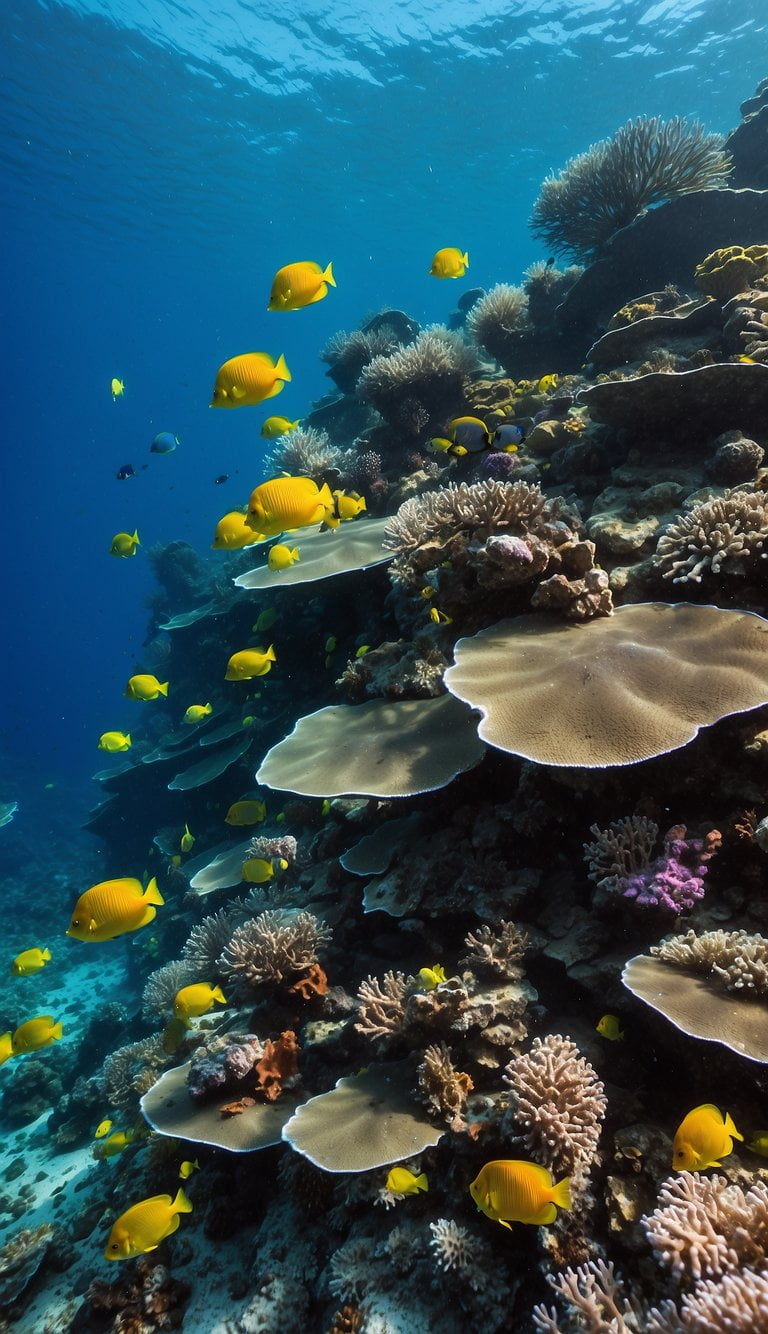Best Scuba Diving in Bonaire: Top Dive Sites and Tips
Bonaire, nestled in the Caribbean, is a premier destination for scuba diving enthusiasts of all levels. With 63 dive sites off the coast and an additional 26 on Klein Bonaire, divers can explore the National Marine Park that boasts over 470 fish species and 57 types of soft and hard coral. This island offers a unique opportunity for unlimited shore diving, making it a haven for total diver freedom.

The climate in Bonaire is warm, dry, and windy year-round, with water temperatures ranging from 78 to 82°F (25 to 27°C). Visibility is also excellent, often exceeding 60 feet (18 meters). Klein Bonaire provides spectacular underwater landscapes adorned with soft corals, sea fans, and vibrant reefs. Divers can expect to encounter a variety of marine life in this underwater paradise.
For those planning a trip, the island’s dry season from April to November offers calm sea conditions and sunny weather, making it an ideal time to visit. Dive services cater to both beginners and advanced divers, ensuring a safe and unforgettable experience.
Key Takeaways
- Bonaire offers unrivaled opportunities for shore diving in the Caribbean.
- The island’s warm, dry climate and excellent water visibility make it a year-round diving destination.
- Klein Bonaire features stunning underwater landscapes and rich marine biodiversity.
Understanding Bonaire’s Unique Dive Environment

Bonaire offers an exceptional scuba diving experience with its diverse marine life, clear waters, and consistent sea conditions. The island is known for its warm climate and the well-protected Bonaire National Marine Park, which supports both conservation and vibrant underwater ecosystems.
Geographical Location and Climate
Bonaire is located in the Leeward Antilles, about 50 miles north of Venezuela and 30 miles east of Curaçao. The island stretches 24 miles long and covers a total area of 112 square miles. Positioned outside the hurricane belt, Bonaire enjoys fairly stable weather conditions year-round.
The climate is described as warm, dry, and windy. Water temperatures typically range from 78 to 82°F, making it ideal for diving any time of the year. These conditions are complemented by excellent water visibility, usually exceeding 60 feet. Divers can expect consistently good sea conditions without the threat of hurricanes.
Bonaire National Marine Park
The Bonaire National Marine Park is a renowned protected area encompassing the island’s surrounding waters. It was established to preserve and protect the marine life and coral reefs unique to the region. The park includes over 85 dive sites, 54 of which are accessible from the shore.
Painted yellow rocks mark these dive sites, guiding divers to some of the best spots. The park’s regulations focus heavily on conservation, ensuring minimal human impact. This has made Bonaire a model for sustainable tourism and marine conservation. Visitors can expect to see a variety of fish species, including parrotfish and tarpons, along with 57 types of coral.
Dive Site Overview
Bonaire is renowned for its clear waters and diverse marine life. This section explores key dive sites, providing detailed insights into their unique features and attractions.
Klein Bonaire’s Underwater Treasures
Klein Bonaire, a small island off the main coast, offers divers a rich underwater landscape. The dive sites around Klein Bonaire are known for their stunning visibility and vibrant coral reefs. Here, divers can expect to see soft corals, sea fans, and a variety of fish species.
Sites like No Name Beach are popular for their easy entry and diverse marine life, making them ideal for both beginners and experienced divers. With its pristine conditions, Klein Bonaire is a top choice for anyone looking to immerse themselves in the beauty of the Caribbean Sea.
The Famous Hilma Hooker Wreck
The Hilma Hooker is one of Bonaire’s most famous dive sites. This shipwreck, located between two coral reefs, sits at around 100 feet deep. Originally a cargo ship, it was intentionally sunk in 1984 and has since become an iconic dive destination.
Divers exploring the Hilma Hooker can swim through sections of the ship, offering an exciting experience as they navigate its interior. The wreck is home to various marine life, including barracudas and eels, making each dive an adventure.
Shore Diving Paradises: Salt Pier and 1000 Steps
Bonaire is well-known for its excellent shore diving opportunities. Salt Pier is a standout site, offering an easy entry and a stunning array of marine life. Underwater, the pier’s pilings are covered with colorful corals and sponges, attracting plenty of fish species.
Another popular shore dive is 1000 Steps. Despite its name, it’s only 67 steps down to the water. This site is known for its beautiful coral formations and clear waters, making it a favorite among photographers. Divers often see turtles, rays, and various tropical fish, adding to the site’s allure.
By offering detailed and specific insights into these dive sites, divers can better appreciate the unique underwater experiences Bonaire has to offer.
Marine Life in Bonaire
Bonaire’s marine environment is incredibly diverse, featuring vibrant coral reefs, a variety of fish species, unique macro life, and larger pelagic species. This section provides an in-depth look at the captivating marine life that makes diving in Bonaire an unforgettable experience.
Coral Reefs and Their Inhabitants
Bonaire’s coral reefs are some of the healthiest in the Caribbean. The reefs are primarily composed of hard corals such as staghorn and elkhorn corals, which create complex structures that provide shelter for many marine species. Soft corals, including sea fans and gorgonians, add to the vibrant underwater scenery.
Among the reef’s inhabitants, reefs fish like angelfish, damselfish, and butterflyfish are common. Crustaceans such as shrimp and crabs can often be spotted hiding in crevices. At night, divers might encounter nocturnal species like the elusive octopus and various types of lobsters.
Sponges, Seahorses, and Macro Life
Bonaire is renowned for its macro life, which includes a plethora of tiny marine creatures. Sponges of different shapes and colors are abundant, providing habitats for smaller fish and invertebrates. Seahorses, though camouflaged and hard to spot, are a popular sight for keen-eyed divers.
Macro photographers will delight in the variety of subjects available. Frogfish, known for their excellent camouflage, are a frequent find. Nudibranchs, with their vibrant colors and delicate forms, are also common. These small creatures contribute significantly to the reef’s biodiversity and charm.
Commonly Spotted Fish and Pelagic Species
Diving in Bonaire offers encounters with a spectrum of fish species and larger pelagic creatures. Commonly seen reef fish include parrotfish, tarpon, lionfish, moray eels, and the curious barracuda. Parrotfish are particularly important, as they help maintain the health of the coral reefs.
In deeper waters, divers can encounter larger species such as eagle rays and manta rays gliding gracefully above the reef. Hawksbill turtles are often seen munching on sponges, and nurse sharks can be spotted resting on the sandy seabed. Though rarer, whale sharks and other large pelagic species occasionally make an appearance, adding to the excitement and adventure of diving in Bonaire.
Diving Conditions in Bonaire
Bonaire offers exceptional diving conditions year-round, featuring clear waters and warm temperatures. Divers can expect stable sea conditions, little to no strong currents, and fantastic visibility, making Bonaire a top destination for underwater exploration.
Visibility and Water Temperature
The water around Bonaire is known for its excellent visibility, often reaching up to 100 feet (30 meters). This clarity allows divers to enjoy the vibrant underwater life and stunning coral reefs fully.
Water temperatures are pleasantly warm, ranging between 78 to 84°F (25 to 29°C) throughout the year. These consistent temperatures ensure a comfortable dive, whether you are visiting in the summer or winter months.
This makes Bonaire an ideal location for both casual divers and professional photographers looking to capture the beauty of marine life.
Sea Conditions and Currents
Bonaire’s sea conditions are generally calm, providing a safe and enjoyable experience for divers. The island’s location outside the hurricane belt means it is less affected by severe weather, ensuring stable conditions almost all year round.
Strong currents are rare, which makes Bonaire particularly appealing for beginner divers and those looking to take relaxed dives.
Many of the dive sites are accessible from the shore, allowing divers to easily enter and exit the water. These conditions make Bonaire not only a beautiful but also a highly accessible diving location.
Scuba Diving Essentials in Bonaire
When planning a scuba diving trip to Bonaire, there are some key aspects you should know to make the most of your experience. This guide covers how to choose the right dive center, necessary equipment and safety tips, and the training and certification opportunities available.
Choosing the Right Dive Center
Selecting the right dive center can greatly enhance your diving experience. Bonaire offers numerous options, from smaller, personalized dive shops to larger, more comprehensive dive resorts.
Consider the following factors:
- Reputation: Look for centers with positive reviews and certifications from organizations like PADI.
- Offerings: Some centers focus on guiding beginners, while others cater to advanced divers or specialize in specific types of dives, such as Nitrox.
By focusing on these elements, you can find a dive center that matches your needs and skill level.
Equipment and Safety
Safety is paramount when diving, and having the right equipment is crucial. Most dive centers in Bonaire provide options for renting or buying gear.
Essential equipment includes:
- Mask, Fins, and Snorkel: Ensure a comfortable fit.
- Regulator and BCD (Buoyancy Control Device): Regularly checked for PSI levels.
- Dive Computer: To monitor depth and time.
- Wetsuit: Water temperatures in Bonaire range from 78 to 82°F (25 to 27°C), so a 3mm suit is usually sufficient.
Safety tips:
- Always dive with a buddy.
- Check your equipment before each dive.
- Plan your dive and dive your plan.
These practices ensure a safe and enjoyable diving experience.
Dive Training and Certification Opportunities
Bonaire is a great place for divers of all skill levels, including those looking to get certified.
Training programs to consider:
- PADI Open Water Diver: Ideal for beginners, widely recognized.
- Advanced Open Water Diver: For those looking to enhance skills with guided dives.
- Specialty Courses: Nitrox, underwater photography, and more.
Many dive centers offer certification programs, making it convenient to learn or advance your skills while exploring Bonaire’s spectacular dive sites.
Conservation and Sustainable Diving Practices
Conservation and sustainability are key aspects of scuba diving in Bonaire. By following certain guidelines, divers can help preserve the island’s rich marine biodiversity and ensure that the coral reefs remain healthy for future generations.
Protecting Bonaire’s Marine Environment
Bonaire is known for its vibrant coral reefs and diverse marine life. To help protect these ecosystems, divers should practice buoyancy control to avoid accidentally touching or damaging corals. It’s important to keep a safe distance from marine creatures to prevent stressing them.
Use reef-safe sunscreen to reduce the number of harmful chemicals entering the water. Avoid touching, standing on, or taking anything from the reef as these actions can cause significant harm. Follow rules set by the Bonaire National Marine Park, including no fishing, anchoring, or spearfishing in protected areas.
Participate in Conservation Efforts
Divers have opportunities to engage in conservation activities while visiting Bonaire. Participating in organized clean-up dives helps remove debris and trash from the reefs. Programs like Project AWARE encourage divers to collect and report marine debris.
Contributing to artificial reef projects is another way to support marine conservation. These efforts create new habitats for marine life and help restore damaged reef areas. Joining educational sessions on marine conservation can enhance understanding and foster responsible diving habits.
Planning Your Dive Trip to Bonaire
Bonaire is a fantastic location for scuba divers. It offers warm, clear waters and diverse marine life. To make the most of your trip, consider the best time to visit, accommodation options, and how to get there.
Best Time to Visit for Diving
Bonaire’s climate is warm and dry year-round, making it ideal for diving any time. Water temperatures average between 78 to 82°F (25 to 27°C). Visibility is excellent throughout the year, often exceeding 60 feet (18 meters). While there is a designated dive season, the island offers great diving conditions all year. This flexibility allows divers to plan their visits based on personal schedules without worrying about poor weather conditions.
Accommodations and Dive Packages
Kralendijk, the capital of Bonaire, hosts most of the island’s dive resorts. Many offer combo packages, including accommodations and dive tours, which are both convenient and cost-effective. Some well-known options include Buddy Dive Resort and Captain Don’s Habitat. PADI Travel also offers customizable dive packages tailored to the needs of both novice and experienced divers. Packages frequently include equipment rentals, guided dives, and sometimes even transportation to dive sites.
Travel and Accessibility
Traveling to Bonaire is straightforward due to the Flamingo International Airport, which receives direct flights from several major cities. This airport is a short drive from Kralendijk, where most dive resorts are located. Travel around the island is simple as well, with rental cars widely available. Public transportation is less common, but many resorts offer shuttle services. PADI Travel platforms can help streamline booking, making the process seamless for international travelers.
Non-Diving Activities in Bonaire

Bonaire offers a variety of activities beyond scuba diving that appeal to all kinds of travelers. From island exploration to wildlife encounters, there is plenty to experience on this Caribbean gem.
Exploring the Island’s On-Land Attractions
Take a scenic road trip around Bonaire to see the island’s landscape and unique sites. Renting an off-road vehicle is a popular choice for visitors who want to explore at their own pace. Key stops include the historic site of Red Slave, which offers a glimpse into the island’s past.
For a break from exploring, head to Lac Bay. This area is famous for its beautiful beaches and clear waters. It’s a perfect spot for snorkelers who want to see vibrant marine life without diving deep. Nearby, the Buddy Dive Resort provides amenities for both divers and non-divers alike.
Consider visiting the ABC Islands trio: Aruba, Bonaire, and Curacao. Each island has its own charm, but Bonaire’s natural beauty and tranquil environment make it a standout destination.
Bonaire’s Wildlife and Flamingos
Bonaire is home to a diverse array of wildlife. One of the must-visit places is the Donkey Sanctuary. Here, visitors can see and learn about the island’s hundreds of rescued donkeys.
Another highlight is the abundance of flamingos. Bonaire boasts one of the largest flamingo colonies in the Caribbean. The vibrant pink birds can often be seen at salt flats and mangrove areas.
In addition to flamingos, Bonaire’s varied ecosystems support a rich variety of birds and other animals, making it a haven for nature lovers and wildlife photographers.
Cultural and Historical Insights

Bonaire offers a rich blend of cultural heritage and fascinating historical landmarks that reflect its unique history and vibrant local culture. Visitors can explore the island’s Dutch roots and learn about significant sites and museums.
Bonaire’s Dutch Influence and Local Culture
Bonaire’s Dutch influence is evident in its architecture, governance, and traditions. As a special municipality of the Netherlands, Dutch is an official language, alongside English and Papiamentu. The capital city, Kralendijk, showcases Dutch colonial-style buildings, vibrant markets, and street art that celebrate the island’s multicultural heritage.
Local festivals, such as the annual Simadan harvest festival, highlight Bonaire’s agricultural history and Afro-Caribbean roots. Also, traditional music and dance, like the tumba and meringue, form an integral part of Bonairean culture. Culinary enthusiasts will find a fusion of Caribbean and Dutch cuisine, with local dishes like goat stew and fresh seafood.
Historical Landmarks and Museums
Bonaire is home to several historical landmarks and museums that provide insight into its past. The Washington Slagbaai National Park, once a plantation, is now a pristine nature reserve and historical site. Visitors can explore old plantation buildings and see the rusted remains of salt pans.
The Terramar Museum in Kralendijk offers exhibitions on Bonaire’s archaeological history, covering the island’s indigenous cultures, colonial era, and maritime activities. Another significant site is the Slave Huts of Bonaire, small white cabins that were once used by slaves working in the salt mines during the 19th century. These landmarks offer a poignant reminder of the island’s history and resilience.
Frequently Asked Questions
Bonaire is known for its warm waters, diverse marine life, and accessible shore diving. Here are some of the most common questions people have when planning a dive trip to this Caribbean island.
What are the top recommended dive sites for beginners in Bonaire?
Popular dive sites for beginners include Klein Bonaire and the Hilma Hooker. Sites like Bari Reef and 1,000 Steps are also well-suited for novices due to their calm waters and abundant marine life.
How do cruise ship passengers organize scuba diving trips in Bonaire?
Cruise ship passengers can book diving excursions through the cruise line or local dive shops. Many companies offer flexible schedules to accommodate ship arrival and departure times.
Can you provide reviews of the scuba diving experience in Bonaire?
Divers often praise Bonaire for its clear visibility and healthy coral reefs. Reviewers frequently highlight the convenience of shore diving and the variety of fish species, making it a favorite destination for both novice and experienced divers.
Are there all-inclusive dive packages available in Bonaire?
Yes, many dive resorts in Bonaire offer all-inclusive packages. These packages typically include accommodations, meals, and unlimited shore diving. Notable resorts offering these packages are Buddy Dive Resort and Captain Don’s Habitat.
What are the currently closed dive sites in Bonaire and why?
Some dive sites can close due to coral restoration projects or environmental protection efforts. It’s best to check with local authorities or dive shops for the most up-to-date information on site closures.
How does the diving experience in Bonaire compare to that of its neighboring islands?
Bonaire is often favored for its easy shore diving and excellent visibility. While neighboring islands like Curacao and Aruba offer great dives, Bonaire’s marine park status ensures a high level of reef protection, making it a standout destination in the Caribbean.









